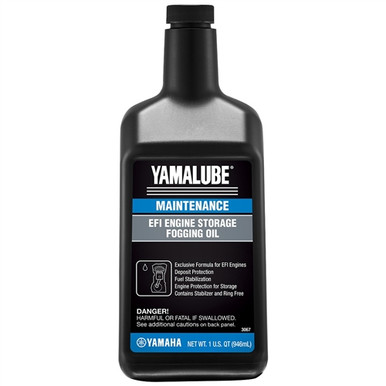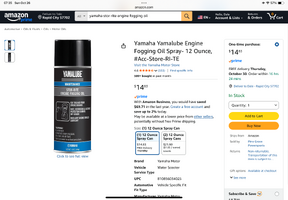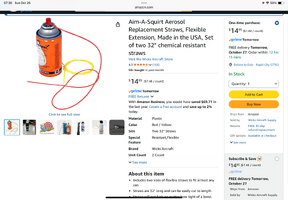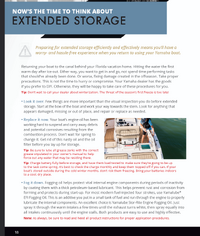Phapcicle
Member
- Messages
- 4
- Reaction score
- 3
- Points
- 12
- Boat Make
- Yamaha
- Year
- 2025
- Boat Model
- AR
- Boat Length
- 19
Howdy,
Just got done paying for the 10hr service and ""deluxe winterization"" at my local certified Yamaha dealer. I was told on the phone prior to the appt that they will fog the engine in addition to the 10hr service. I pick up my AR190 and notice the documentation has an X next to fogging the engine because it's an EFI engine. Walk back in and talk to the service rep and he says they don't fog any of their Yamaha engines because it can gunk up the valves... Thought that sounded odd considering the research I had done prior to purchasing so I called Yamaha corporate who said that, yes, they do recommend fogging for long term storage (they literally make EFI specific fogging fluid). Also called the out of state dealer I bought the boat from (TWL Marine in Oshkosh [absolutely cracked dealership, would recommend]) who stated that they do fog their boats (no longer fog individual cylinders, just thru the intake for 8 seconds) as well as another dealer within my state who said the same thing. So, won't be going to my local dealership for jack squat anymore, but I'm wondering how feasible it is to hook up a secondary gas tank so I can use the EFI fogging oil mixed with two gallons of gas. Any advice would be appreciated.
Just got done paying for the 10hr service and ""deluxe winterization"" at my local certified Yamaha dealer. I was told on the phone prior to the appt that they will fog the engine in addition to the 10hr service. I pick up my AR190 and notice the documentation has an X next to fogging the engine because it's an EFI engine. Walk back in and talk to the service rep and he says they don't fog any of their Yamaha engines because it can gunk up the valves... Thought that sounded odd considering the research I had done prior to purchasing so I called Yamaha corporate who said that, yes, they do recommend fogging for long term storage (they literally make EFI specific fogging fluid). Also called the out of state dealer I bought the boat from (TWL Marine in Oshkosh [absolutely cracked dealership, would recommend]) who stated that they do fog their boats (no longer fog individual cylinders, just thru the intake for 8 seconds) as well as another dealer within my state who said the same thing. So, won't be going to my local dealership for jack squat anymore, but I'm wondering how feasible it is to hook up a secondary gas tank so I can use the EFI fogging oil mixed with two gallons of gas. Any advice would be appreciated.




